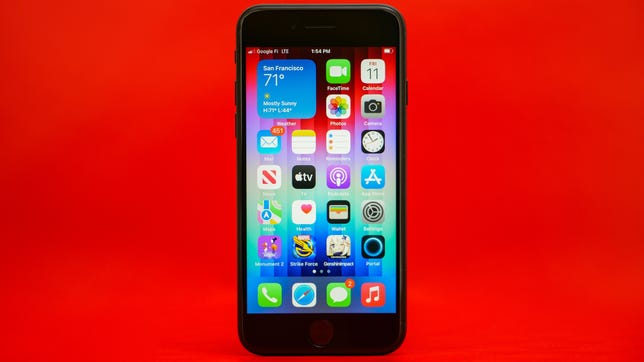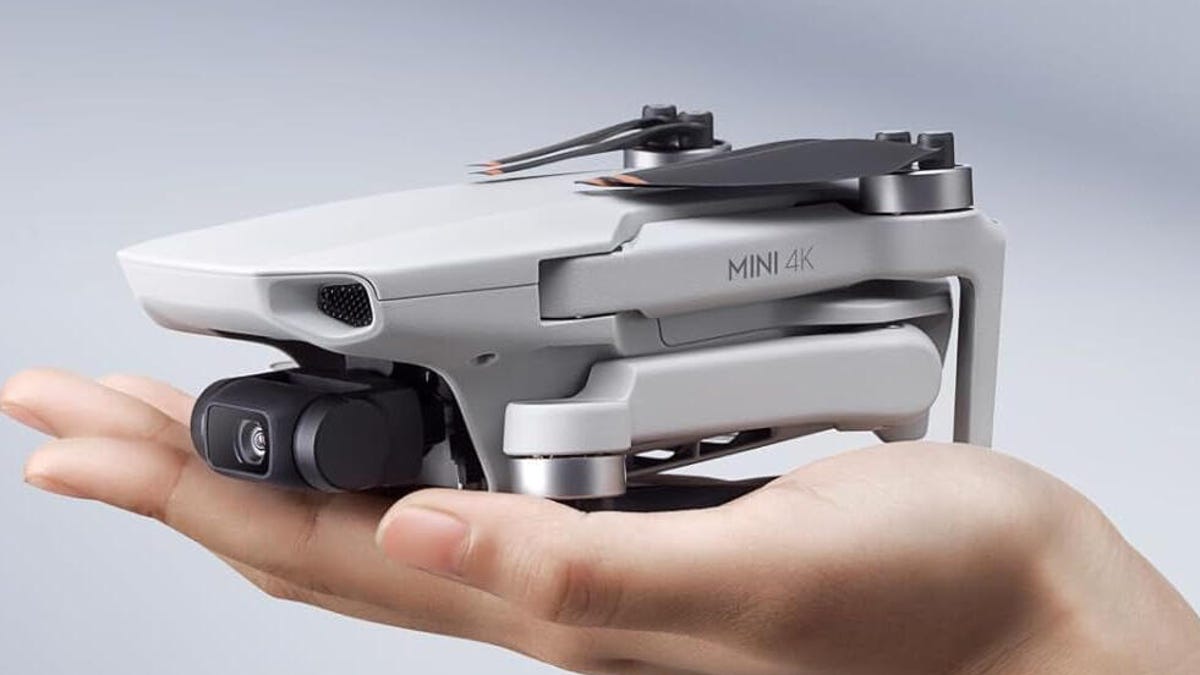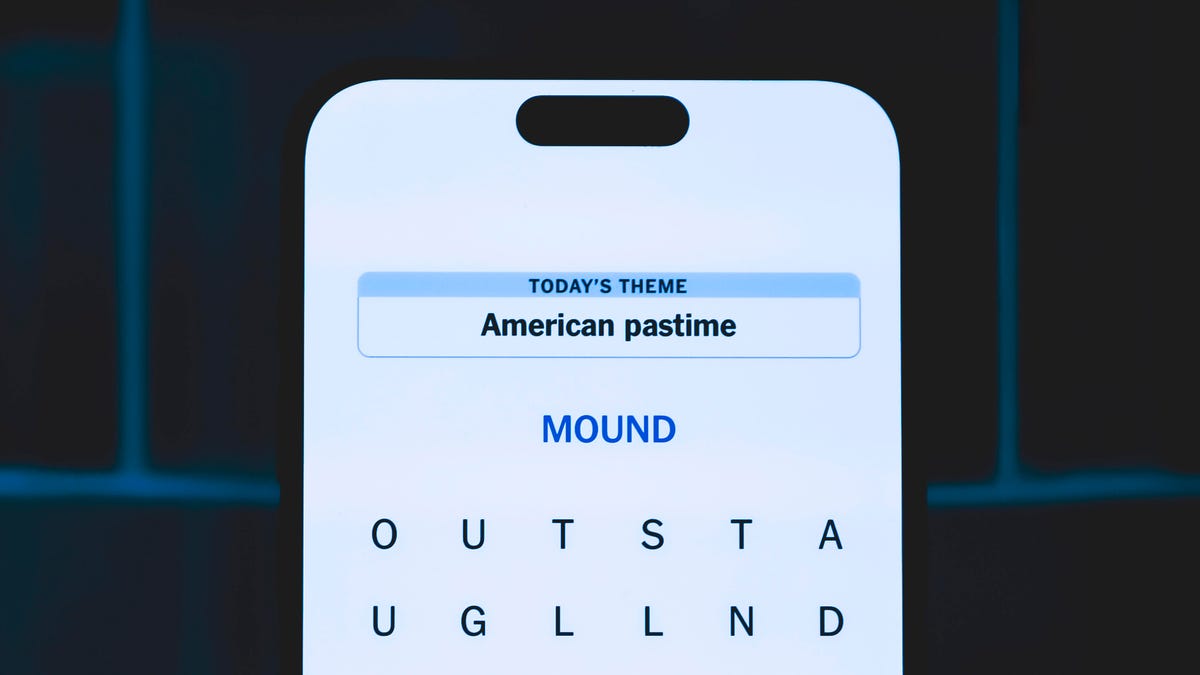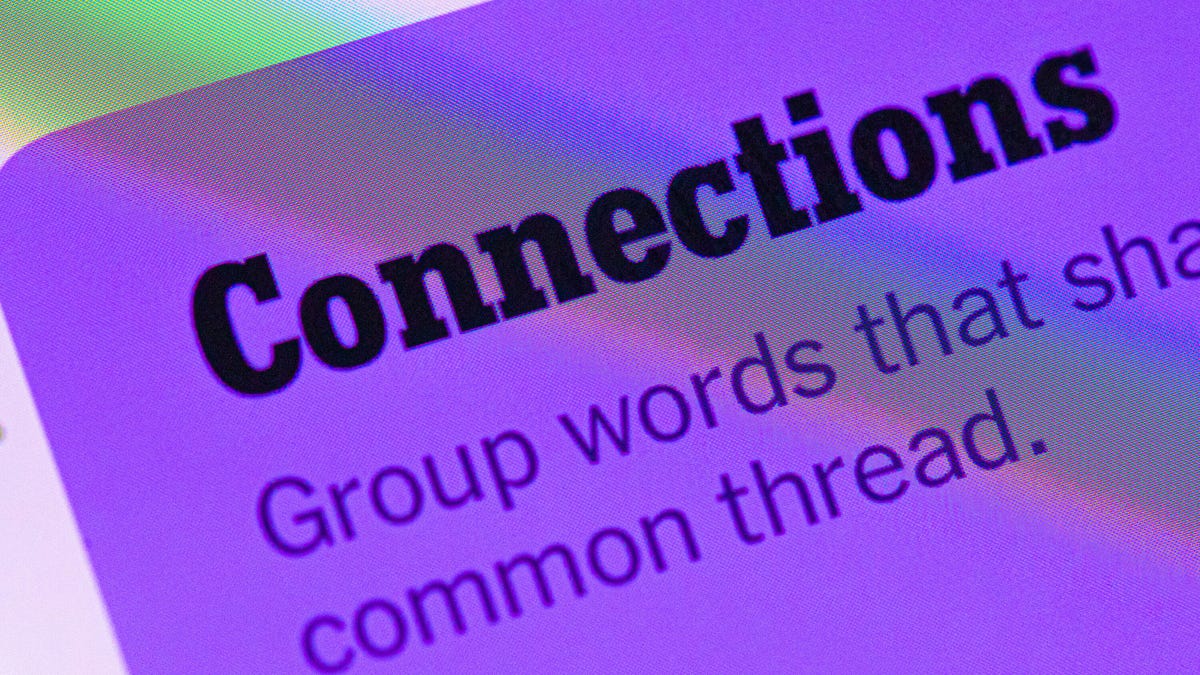Technologies
Best iPhone in 2023: Which Apple Phone Should You Buy?
Apple’s iPhone lineup ranges from $429 to $1,599. Here are the best iPhone models to match your needs and budget.

Apple currently sells eight different iPhone models that date back to 2020. Compare that to when Steve Jobs launched the original iPhone in 2007 where the only option was getting 4GB or 8GB of storage. While there’s no such thing as a true «best» iPhone, depending on your needs, budget and preferences, some iPhone models will be better for you than others. With the addition of the iPhone 14 series and the iPhone 11, 13 Pro and 13 Pro Max being discontinued, deciding on the right one can be confusing.
In terms of prices, the current iPhone lineup starts as low as $429 for the 2022 iPhone SE and tops off at $1,599 for the iPhone 14 Pro Max with a whopping 1TB of storage. Below are the various models, their release date, the number of rear cameras they have, their processor and their current list price, which for some phones includes a $30 activation fee that’s waived if you activate your iPhone on a carrier at the time of purchase. And if you’re looking for the best iPhone deals, we have you covered there too.
Whether it’s the tiny iPhone 13 Mini and its 5.4-inch screen or the 2020 iPhone 12, you actually have a lot of options to choose for your perfect phone. Navigating Apple’s iPhone spectrum can be overwhelming, whether you’re considering colors (the iPhone 13 comes in six), or features like the iPhone 14 Pro’s Dynamic Island, which expands and contracts to show system alerts.
Then there are the cameras. The iPhone typically has some of the best cameras found on any phone. But the iPhone SE has just one on the back. The 12, 13, 13 Mini, 14 and 14 Plus each have dual-rear cameras. And then there’s the 14 Pro and 14 Pro Max that not only have a trio of cameras but come with features like the ability to take ProRaw photos or record ProRes videos.
Read more: Best Wireless Earbuds for 2023: Top Options at Every Price
To further complicate things, carriers like AT&T, T-Mobile and Verizon as well as third-parties like Best Buy and Amazon continue to sell discontinued models such as the iPhone 13 Pro and 13 Pro Max. And then there’s the prices. Apple’s starting price for each model isn’t necessarily what you’ll pay. Nearly all of the phones on this list can be bought for significantly less with a mixture of trade-ins and/or service commitments with most US wireless carriers.
I know, it’s a lot. But I’ve tested all eight versions of the iPhone and can help you navigate through all the noise.
Key terms
eSIM
An eSIM takes all of the important information about your phone account — including its number, wireless carrier and subscription — and stores it in software instead of on a physical SIM card.
With the iPhone 14, Apple removed the physical SIM card tray and embraced embedded SIM cards. This means you can’t just pluck your SIM card out of your current phone and put it into a new one. But this shouldn’t affect your experience since all the major US carriers and a number of smaller operators work with eSIM.
Apple has long supported eSIM, dating all the way back to 2018’s iPhone XS, XS Max and XR. When setting up a new iPhone 14, the device will guide you through transferring your current provider over to the new phone. A list of supported wireless networks can be found on Apple’s website.
iOS 16
Apple’s iOS 16 is the latest version of Apple’s iPhone software. It’s on the iPhone 14 by default and is also available as an update for the iPhone 8 and later. iOS 16 includes new features such as customizable lock screens, an update to the Messages app that allows for unsending and editing iMessage texts and new photo editing tools.
How we test phones
We evaluate each iPhone model on its overall quality, features, design, performance, cameras, battery life and value. We test phones in the real world, using them as our main device to make calls, play video games, take photos and browse apps and social media. We document our experiences in an initial review which we periodically update with additional tests and comparing them against new phones from other companies like Samsung, Google and OnePlus.
Photography is often a major focus and we take pictures and videos of different subjects in a variety of settings and lighting scenarios. We try out any new camera modes, such as Action mode that debuted with the iPhone 14 line.
Battery testing is conducted through both assessments of how long the phone lasts during a typical day of use, and by noting how the phone performs during more focused sessions of video calls, media streaming and gaming. CNET also conducts a video playback test, which isn’t always included in initial versions of the review since it can take a full day to run.
We use benchmarking apps to measure the performance, alongside our own anecdotal experiences using the phone for our review. We’ll also compare how the phone looks, feels and functions to other iPhone models — for instance comparing the iPhone 14 Plus with a 6.7-inch screen against the similarly sized iPhone 14 Pro Max.
We also evaluate whether a newer version includes enough features to make it worth upgrading from older models.
Technologies
What a Ban Would Actually Mean for DJI Drone Owners and Holiday Shoppers
What’s the secret to a very un-merry shopping season? A brand new, unusable drone.

With Thanksgiving wrapped up and the Black Friday shopping sales here, if a DJI drone is on your holiday wish list, you might want to hit «buy» immediately. The company has issued a stark warning: Its drones could be banned from sale in the US, and the deadline is looming.
The Federal Communications Commission voted 3-0 at the end of October to «close loopholes» that allow tech deemed a «national security risk» to be sold in the US. In plain English, the US government is clearing the path to give DJI the same treatment it gave Chinese phone-maker Huawei, effectively banning its products from the American market.
The US government has deemed DJI, which is based in China, a security risk. It’s also considering a separate ban on TP-Link routers.
DJI is already sounding the alarm, posting on Instagram that a «deadline that could decide DJI’s fate in the US is just 43 days away» (now 19 days away). The company is warning that without an audit, its products could face an «automatic ban.» The US government has long labeled the Chinese drone maker a security risk, and it looks like the hammer might finally be coming down right before the holidays.
Don’t miss any of our unbiased tech content and lab-based reviews. Add CNET as a preferred Google source.
The vote isn’t the end of the road, however. Future bans would need to target specific products and would require a period of public consultation. But it appears the groundwork is being set for the FCC to block sales of future and some existing DJI drones from US shores, as well as products that use DJI technology.
The government has called for a DJI audit by the end of the year, but if that doesn’t happen, DJI drone products could be banned for sale by default under a national security law.
DJI asks for a security audit before any ban
A representative for DJI told CNET that while the FCC vote references a rule change that doesn’t currently apply to DJI specifically, the National Defense Authorization Act deadline in December would put Chinese companies like it on the FCC’s ban list, «without any evidence of wrongdoing or the right to appeal.»
Adam Welsh, head of global policy at DJI, said the company has repeatedly said it would be open to audit, but that «more than 10 months have now passed with no sign that the process has begun.»
«The US government has every right to strengthen national security measures, but this must go hand in hand with due process, fairness, and transparency,» Welsh said.
Welsh said DJI is urging the government to start the audit process or grant an extension.
Will DJI drone owners need to give them up?
Because the ban would apply to new sales, not drones that have already been sold, a DJI drone you already own would still be legal to use — at least under current rules.
Government agencies, however, are prohibited from purchasing or using drones from Chinese companies, including DJI.
DJI’s drones consistently rank high in their product category. In January, they dominated CNET’s list of best drones for 2025. But some of the company’s newest products, such as the DJI Mavic 4 Pro, haven’t been available for sale in the United States.
Even DJI products that are not yet banned may be hard to find. The website UAV Coach has posted a guide to the bans and reports that, due to inventory issues, most DJI drone models are sold out at retailers regardless of future FCC action.
Technologies
Today’s NYT Strands Hints, Answers and Help for Nov. 29 #636
Here are hints and answers for the NYT Strands puzzle for Nov. 29, No. 636.

Looking for the most recent Strands answer? Click here for our daily Strands hints, as well as our daily answers and hints for The New York Times Mini Crossword, Wordle, Connections and Connections: Sports Edition puzzles.
Today’s NYT Strands puzzle is a real puzzler. Some of the answers are difficult to unscramble, so if you need hints and answers, read on.
I go into depth about the rules for Strands in this story.
If you’re looking for today’s Wordle, Connections and Mini Crossword answers, you can visit CNET’s NYT puzzle hints page.
Read more: NYT Connections Turns 1: These Are the 5 Toughest Puzzles So Far
Hint for today’s Strands puzzle
Today’s Strands theme is: What a piece of work!
If that doesn’t help you, here’s a clue: You can build it in a shop.
Clue words to unlock in-game hints
Your goal is to find hidden words that fit the puzzle’s theme. If you’re stuck, find any words you can. Every time you find three words of four letters or more, Strands will reveal one of the theme words. These are the words I used to get those hints but any words of four or more letters that you find will work:
- CREW, REAM, LANE, WHEE, DELL, CANE, PULL, REVEL
Answers for today’s Strands puzzle
These are the answers that tie into the theme. The goal of the puzzle is to find them all, including the spangram, a theme word that reaches from one side of the puzzle to the other. When you have all of them (I originally thought there were always eight but learned that the number can vary), every letter on the board will be used. Here are the nonspangram answers:
- WHEEL, AXLE, LEVER, WEDGE, PLANE, PULLEY, SCREW
Today’s Strands spangram
Today’s Strands spangram is SIMPLEMACHINE. To find it, start with the S that’s three letters to the right on the top row, and wind over and down.
Technologies
Today’s NYT Connections Hints, Answers and Help for Nov. 29, #902
Here are some hints and the answers for the NYT Connections puzzle for Nov. 29, #902.

Looking for the most recent Connections answers? Click here for today’s Connections hints, as well as our daily answers and hints for The New York Times Mini Crossword, Wordle, Connections: Sports Edition and Strands puzzles.
Today’s NYT Connections puzzle is tough. If you need help sorting them into groups, you’re in the right place. Read on for clues and today’s Connections answers.
The Times now has a Connections Bot, like the one for Wordle. Go there after you play to receive a numeric score and to have the program analyze your answers. Players who are registered with the Times Games section can now nerd out by following their progress, including the number of puzzles completed, win rate, number of times they nabbed a perfect score and their win streak.
Read more: Hints, Tips and Strategies to Help You Win at NYT Connections Every Time
Hints for today’s Connections groups
Here are four hints for the groupings in today’s Connections puzzle, ranked from the easiest yellow group to the tough (and sometimes bizarre) purple group.
Yellow group hint: Middle of the body.
Green group hint: Fill-in.
Blue group hint: Nice place to hang out.
Purple group hint: Card game.
Answers for today’s Connections groups
Yellow group: Abdominal area.
Green group: Replacement.
Blue group: Park staples.
Purple group: Blackjack terms.
Read more: Wordle Cheat Sheet: Here Are the Most Popular Letters Used in English Words
What are today’s Connections answers?
The yellow words in today’s Connections
The theme is abdominal area. The four answers are core, midsection, torso and trunk.
The green words in today’s Connections
The theme is replacement. The four answers are backup, cover, relief and substitute.
The blue words in today’s Connections
The theme is park staples. The four answers are bench, pigeon, statue and tree.
The purple words in today’s Connections
The theme is blackjack terms. The four answers are bust, hit, split and stand.
-

 Technologies3 года ago
Technologies3 года agoTech Companies Need to Be Held Accountable for Security, Experts Say
-

 Technologies3 года ago
Technologies3 года agoBest Handheld Game Console in 2023
-

 Technologies3 года ago
Technologies3 года agoTighten Up Your VR Game With the Best Head Straps for Quest 2
-

 Technologies4 года ago
Technologies4 года agoBlack Friday 2021: The best deals on TVs, headphones, kitchenware, and more
-

 Technologies4 года ago
Technologies4 года agoVerum, Wickr and Threema: next generation secured messengers
-

 Technologies4 года ago
Technologies4 года agoGoogle to require vaccinations as Silicon Valley rethinks return-to-office policies
-

 Technologies4 года ago
Technologies4 года agoOlivia Harlan Dekker for Verum Messenger
-

 Technologies4 года ago
Technologies4 года agoiPhone 13 event: How to watch Apple’s big announcement tomorrow
